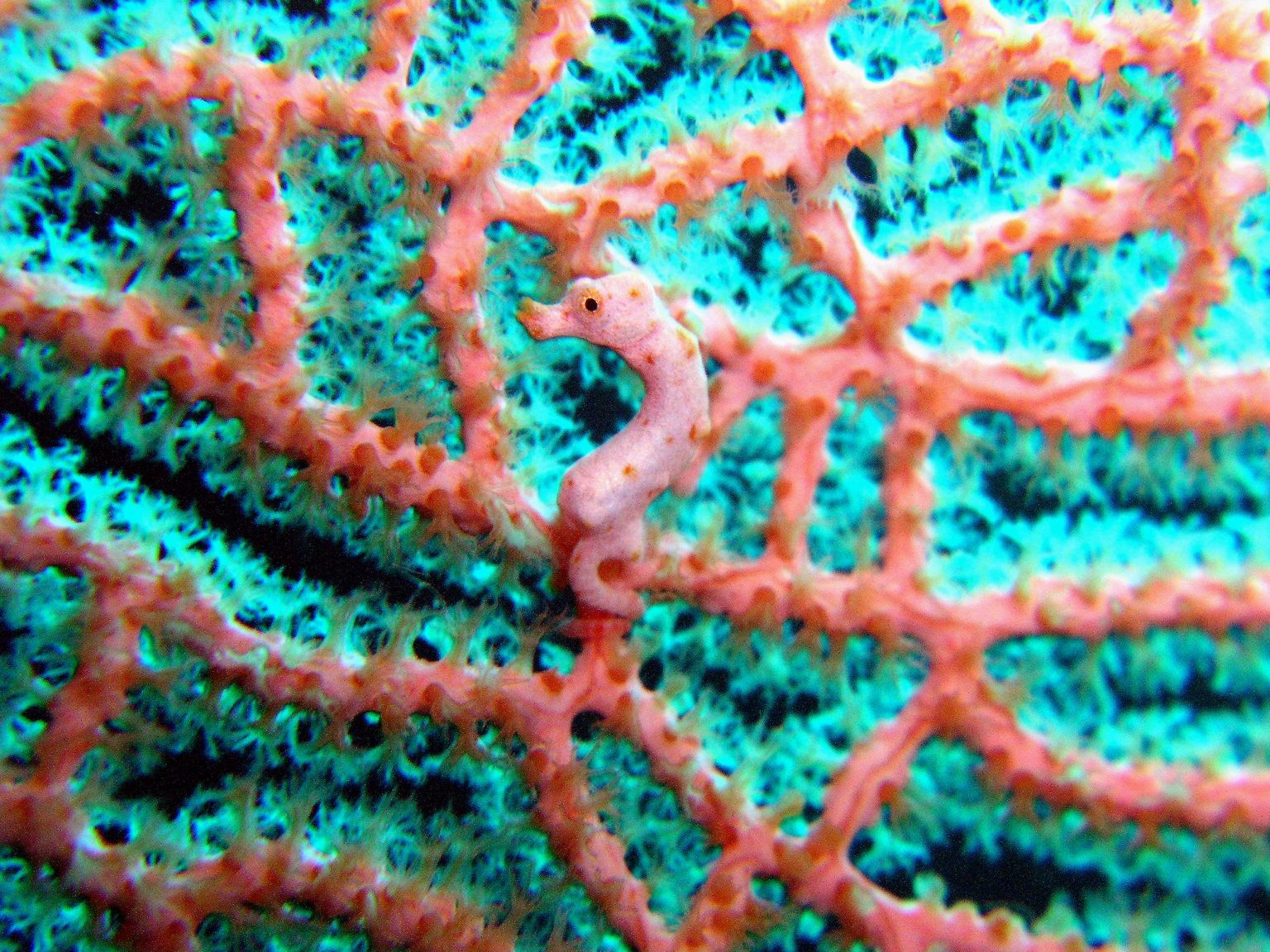
Seahorses, despite their unusual appearance, are indeed fish. Belonging to the family Syngnathidae and the genus Hippocampus, they share this classification with other marine species like pipefish and sea dragons.
They closely resemble the classic knight on a chessboard. Their unique physical characteristics include a horse-like head, monkey-like tail, and armour-like plates.
Seahorses primarily inhabit tropical waters, including the Great Barrier Reef, as well as temperate coastal waters. They often found in seagrass beds, coral reefs, and mangrove roots. With a lifespan of approximately three years in the wild, seahorses have adapted to their environments in remarkable ways. Their swim bladders help them achieve buoyancy, while their independent eye movement allows them to scan for prey and predators simultaneously.
Seahorses are among the slowest-moving fish species, relying on their tiny dorsal fin and tiny pectoral fins to propel them through the water at a very unimpressive rate of 1.5 metres per hour. These fins beat rapidly, but their small size makes seahorses poor swimmers. To compensate for their lack of speed, seahorses have developed prehensile tails that allow them to grasp onto objects like coral or seaweed, anchoring themselves in place.
Seahorses have a unique feeding strategy that involves constant grazing. They lack stomachs, so they must eat frequently to sustain themselves. Their diet consists mainly of tiny fish and plankton, which they consume through a suction mechanism similar to a vacuum cleaner. On average, an adult seahorse eats 30-50 times a day, highlighting their need for constant nourishment.
Camouflage is a vital survival tool for seahorses. These creatures can change colour rapidly to blend into their surroundings, making them virtually invisible to predators and prey alike. Seahorses also mimic the movements of seaweed to evade predators and enhance their feeding efficiency.
Unlike most other fish species, most seahorse species are monogamous, often forming lasting bonds with their mates. As well, they tend to be quite romantic. Every day, male and female seahorses perform elaborate courtship displays that involve circling each other, changing colour, and even holding tails. The romantic seahorse dance is a beautiful example of the deep connections these creatures form with each other.
Just for a change of pace, it is the male seahorses that carry the fertilised eggs in a specialised brood pouch until they hatch. This unique reproductive method ensures that male and female seahorses, including the pregnant male seahorse, and the female seahorse share the responsibilities of raising their young.
The gestation period for seahorse embryos typically ranges from two to four weeks, during which the male provides oxygen and nutrients to the developing eggs. When it’s time for the baby seahorses to be born, the male seahorse undergoes a birthing process that can last up to 12 hours, releasing anywhere from a few dozen to over 1,000 newborn seahorses. Sadly, the survival rate for baby seahorses is quite low, with only about 0.5% reaching adulthood due to high predation rates and environmental challenges.
Unfortunately, seahorses face significant threats to their survival. Human activities such as overfishing and habitat destruction caused by pollution and coastal development have had a devastating impact on seahorse populations. Seahorses are a protected species on the Great Barrier Reef.
Contributed with thanks to Whitsunday Conservation Council. Photo supplied.
Pygmy Sea Horse. Photo supplied.